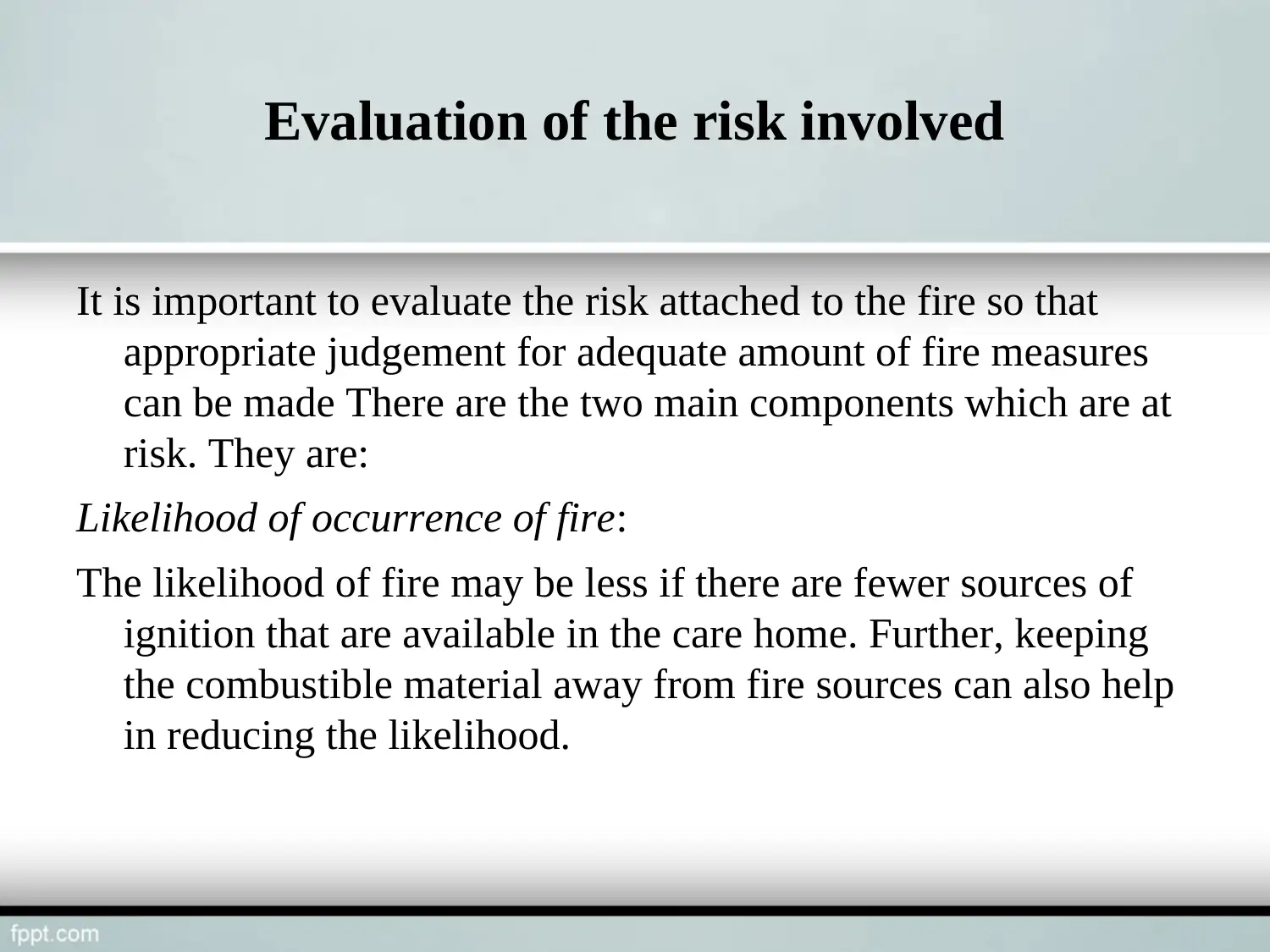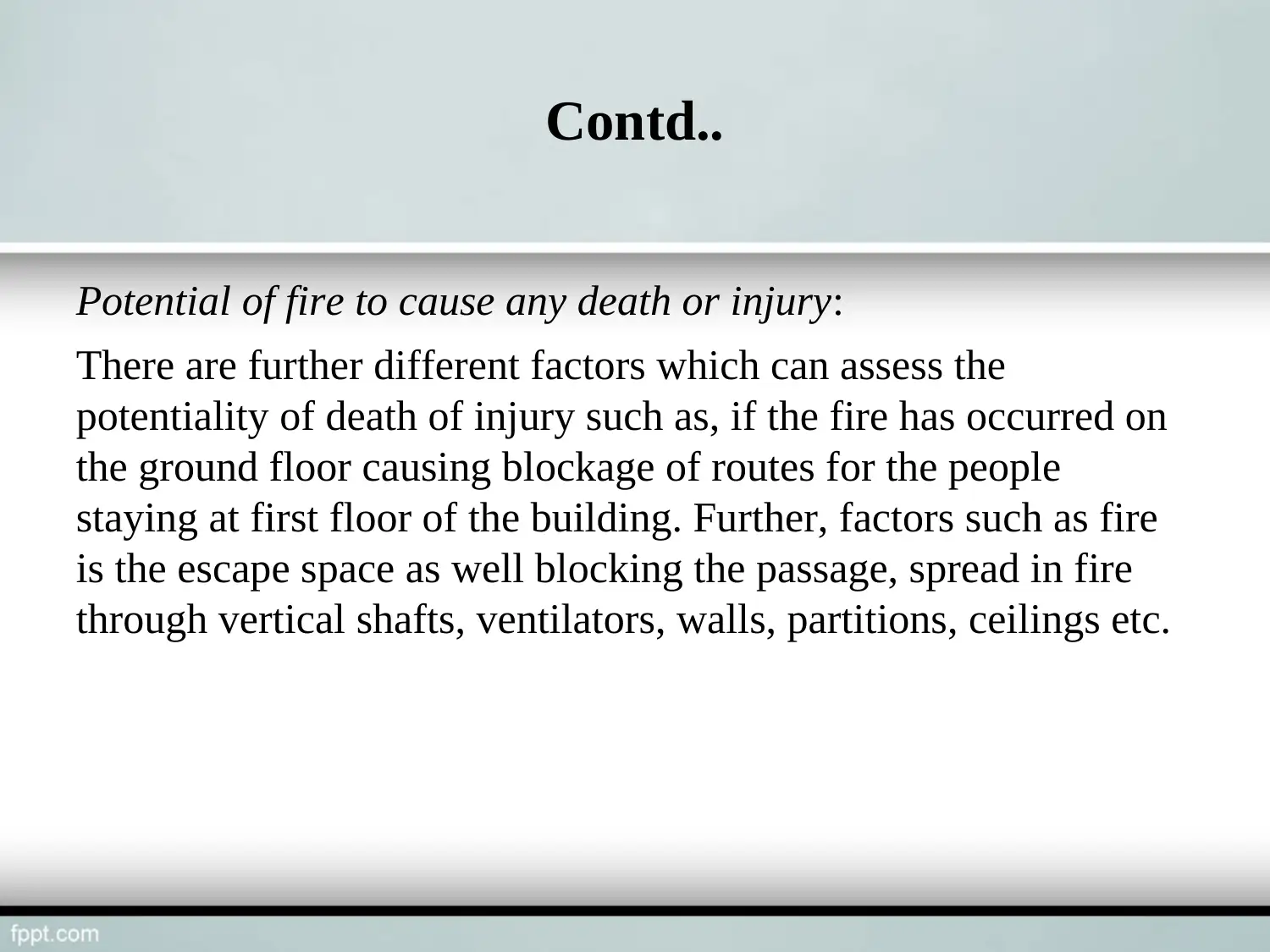Detailed Fire Safety Instructions and Risk Assessment for Care Homes
VerifiedAdded on 2023/03/24
|20
|1539
|83
Report
AI Summary
This report provides comprehensive fire safety instructions for care homes, focusing on risk assessment and prevention strategies. It emphasizes the importance of identifying potential hazards and implementing appropriate measures to minimize fire-related risks. The assessment process involves evaluating the likelihood of fire occurrence and its potential to cause harm, considering factors like ignition sources, combustible materials, and oxygen availability. Key improvements include hazard avoidance, technological upgrades, and proper staff training on emergency procedures. The report also outlines common causes of fire, awareness levels of residents, evacuation guidance, and a fire safety training checklist. Regular maintenance of escape routes, fire warning systems, firefighting instruments, and emergency lighting is crucial. The document further discusses fire detection methods, warning signs, and ways to reduce false alarms. Finally, the report underscores the need for consistent equipment maintenance and replacements to ensure optimal fire safety in care homes. Desklib provides this and other solved assignments for students.
1 out of 20



















![[object Object]](/_next/static/media/star-bottom.7253800d.svg)